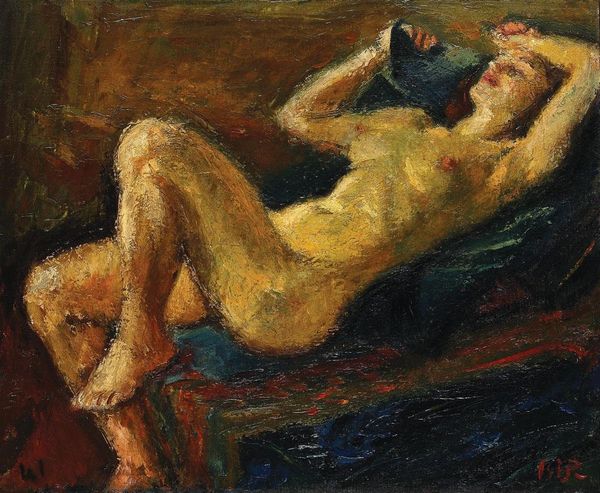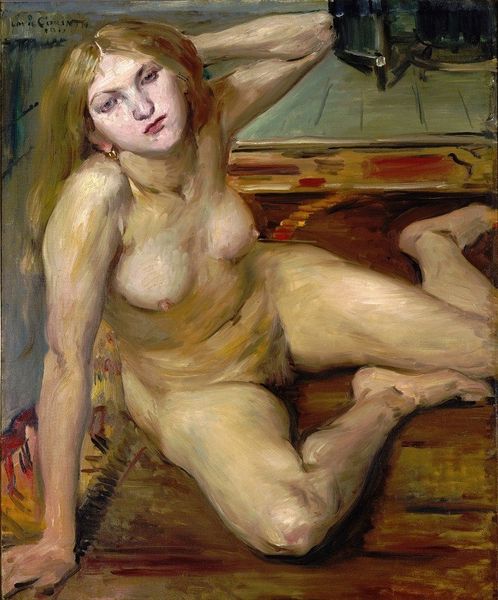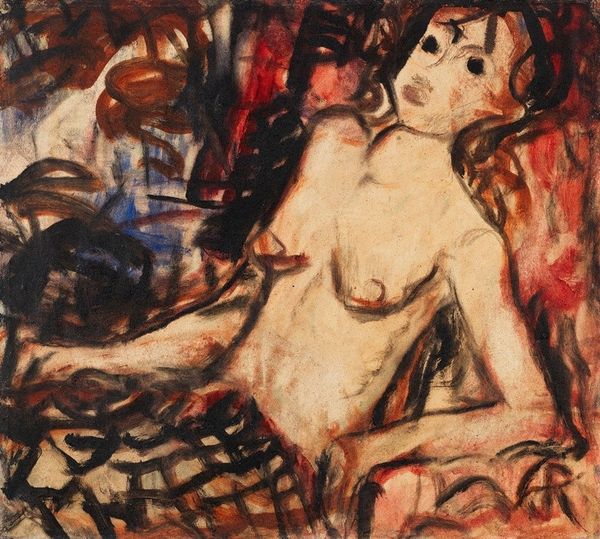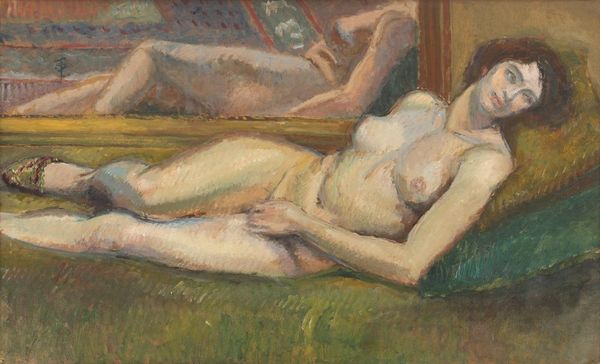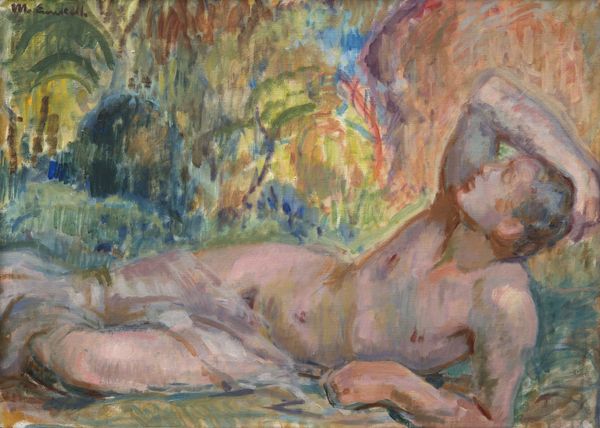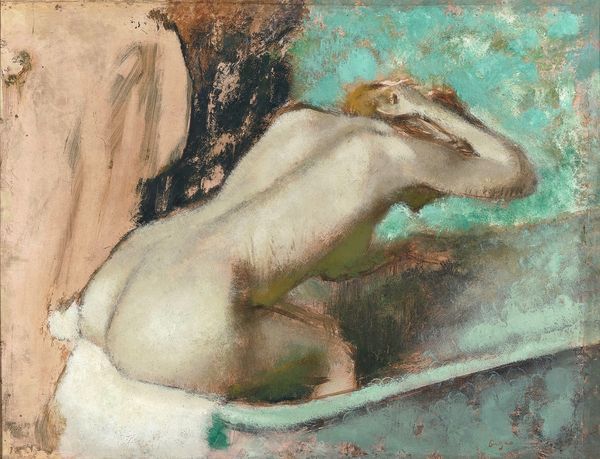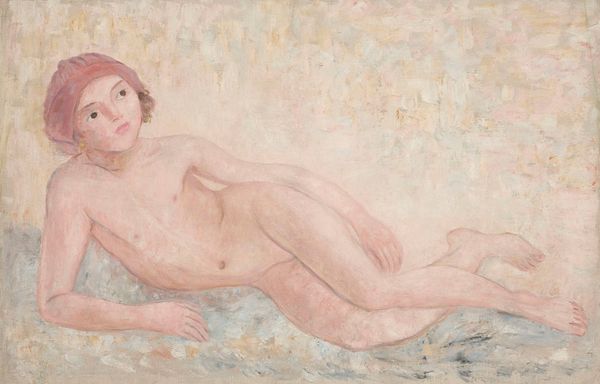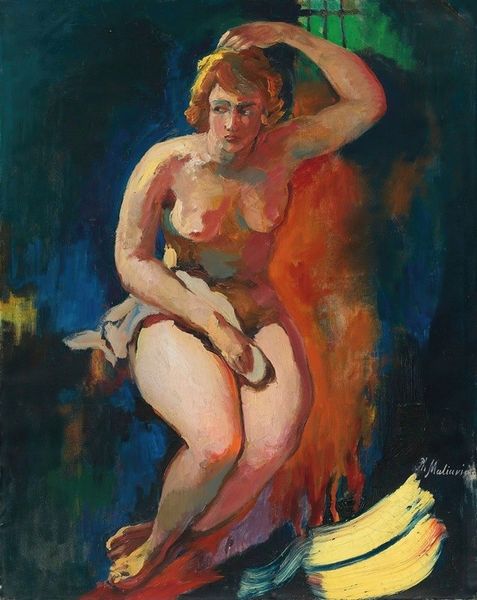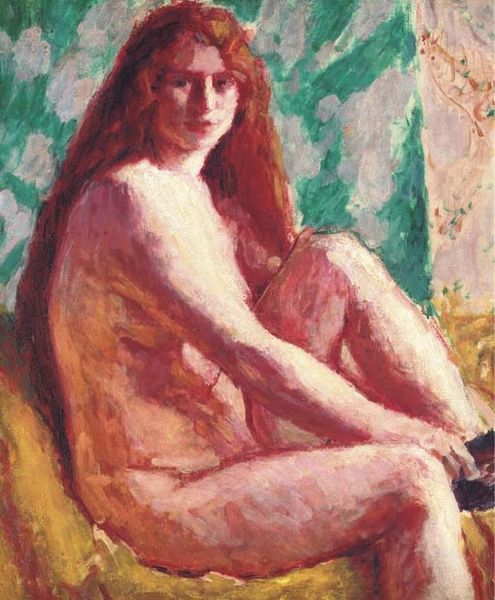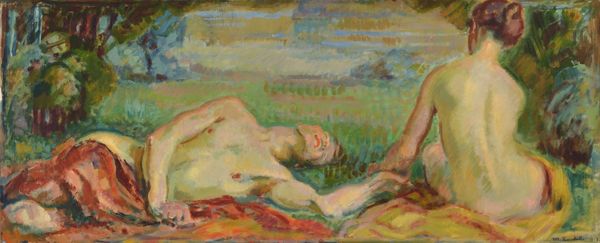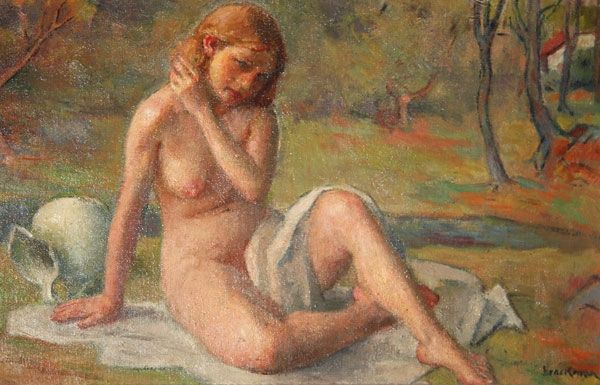
Copyright: Public Domain: Artvee
Editor: This is "Liegender, blonder Mädchenakt auf buntem Teppich" or "Reclining Blonde Nude on a Colorful Carpet," painted around 1912 by Lovis Corinth. It’s an oil painting and I’m struck by the texture and almost crude brushstrokes. How do you approach a painting like this? What do you see? Curator: Primarily, I notice the dialectic created by the contrast between the figure and the ground. The artist employs a restrained palette for the nude form itself, establishing a certain corporeality. But this is then juxtaposed with the frenetic, almost violent brushwork of the carpet, isn’t it? Do you perceive how that tension structures the entire composition? Editor: I see that now, yes. The figure is smoother, calmer than the wild carpet. Is that contrast a key element in expressionist art? Curator: Expressionism seeks to convey subjective experience. Here, observe how the artist manipulates the formal elements—color, line, texture—to generate meaning. The dynamism of the brushstrokes evokes a psychological intensity that complements the vulnerability of the reclining nude. Are you attuned to how the color choices contribute? Editor: Yes, I think so. The figure is rendered in more muted tones which draws attention to her against the chaotic and riotous colours of the carpet beneath. It feels purposeful. Curator: Precisely. It is through such formal contrasts that Corinth orchestrates a powerful statement. Considering the use of visual semiotics, one might further propose this work makes claims regarding the instability or impermanence of physical being. Editor: That makes sense. I never thought about expressionism quite like that. Thank you. Curator: It's a pleasure to explore how intrinsic formal elements generate and signify representational import with you.
Comments
No comments
Be the first to comment and join the conversation on the ultimate creative platform.
